Links to external sources may no longer work as intended. The content may not represent the latest thinking in this area or the Society’s current position on the topic.
Exploring the potential: a high energy density pulsed power device as a UK R&D platform

The Royal Society, with Dr Nick Hawker of First Light Fusion, is hosting this meeting to explore the possible research applications for a new UK capability for High Energy Density (HED) science. The meeting will take place at the Royal Society on Monday 28 November.
Background
The Royal Society is hosting this scientific meeting to explore the wider research and development (R&D) potential of a world-leading High Energy Density (HED) science capability. Having previously hosted meetings on prospects for high-gain inertial fusion energy, the Society is keen to further engage with the scientific community to understand how a pulsed power device as an R&D platform can further benefit the UK’s science and technology research needs.
First Light Fusion will build the world’s largest pulsed power driver for HED science as it progresses its inertial fusion programme. This high-voltage, fast current rise time machine will access multi Gbar regimes on millimetre-spatial-scale lengths, where fundamental science questions on lab-astrophysics, planetary science, materials, radiation, and nuclear fusion can be explored.
We are also keen to understand the more novel areas of research where this machine could provide value. The meeting will explore the potential benefits to UK science from access to this unique type of asset for a variety of R&D application areas. We will also explore how adjustments to machine specifications might facilitate or improve utility in specific application areas, and how access to such a facility would function in practical terms.
Attending this event
This meeting is intended for researchers in relevant fields, taking place online and at the Royal Society.
- This will be a hybrid event
- Attendance is invitation only
- Advance registration is essential
For any enquiries or accessibility requirements, please email the Science Policy team.
Schedule
| 10:00 - 10:15 |
Welcome and Opening Remarks

Dame Julie Maxton CBE, Executive Director, The Royal Society

Dame Julie Maxton CBE, Executive Director, The Royal SocietyDame Julie Maxton is the Executive Director of the Royal Society, the first woman in 350 years to hold the post. Before taking up her position at the Royal Society in 2011 Julie was Registrar at the University of Oxford, the first woman in 550 years in the role. She is an Honorary Fellow of University College Oxford, a Bencher of the Middle Temple, a Freeman of the Goldsmith’s Company and a Board member of Sense about Science. In the past she has also been on the Boards of the Alan Turing Institute, Blavatnik School of Government in Oxford, Haberdasher Aske’s School (Elstree), Engineering UK, Charities Aid Foundation and The Faraday Institute. Originally trained as a barrister at the Middle Temple, Julie combined a career as a practising lawyer with that of an academic, holding a number of senior academic positions, including those of Deputy Vice Chancellor, Professor and Dean of the Faculty of Law at the University of Auckland, New Zealand. Academic and other recognition Julie has received include a CBE (2017) and Honorary Degrees from the Universities of Huddersfield, Warwick, Canterbury, Hull and Bristol. She is the author of several books and numerous articles concerned with trusts, equity, commercial and property law. |
|---|---|
| 10:15 - 10:35 |
What is the role for fusion? A BEIS perspective
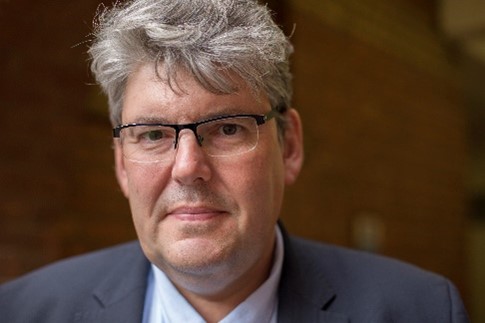
Professor Paul Monks BSc, DPhil, FRMetS, FRSC

Professor Paul Monks BSc, DPhil, FRMetS, FRSCProfessor Paul Monks is the Chief Scientific Adviser (CSA) for the Department for Business, Energy and Industrial Strategy (BEIS). As BEIS CSA, he delivers independent and impartial scientific advice to Ministers and policy makers across the BEIS portfolio. The BEIS CSA portfolio spans a wide range of policy areas, including energy (such as nuclear (fission and fusion), geothermal and hydrogen), climate change, electric vehicles, medical radionuclides, space and national security. His role also covers advising on current and ongoing issues faced by UK businesses and industry, with recent focus on the critical role of science in supporting sustainable, resilient and measurable Net Zero and the challenges of delivering national and global decarbonisation. Professor Paul Monks also works closely with the Government Chief Scientific Adviser, other Departmental CSAs, and BEIS Chief Economist, to strengthen the links within and across departments, encouraging effective engagement and knowledge sharing, and to support delivery of a robust evidence base to underpin BEIS policy decisions. Prior to joining the department, Professor Paul Monks was Pro-Vice Chancellor and Head of College of Science and Engineering at the University of Leicester, where he remains a Professor in Atmospheric Chemistry and Earth Observation Science. |
Chair
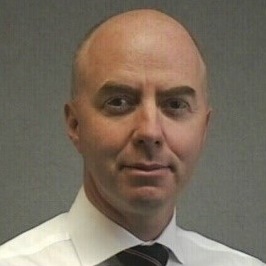
Dr Rupert Lewis, Director of Policy, The Royal Society

Dr Rupert Lewis, Director of Policy, The Royal Society
Rupert is Director of Policy at the Royal Society. Before joining the Society, he led the Government Office for Science (GO-Science) which supports the Government’s Chief Scientific Adviser, providing science advice to the Prime Minister and to the Cabinet, carrying out strategic Foresight projects, and the science of emergency response. His previous roles include head of Automotive policy in the Department of Business, Energy, and Industrial Strategy, where he also led work on business risks and contingency planning and was deputy Chief Scientific Adviser. In Defra he headed Climate Adaptation policy, leading the UK’s first cross-economy climate risk assessment. He also set up the Prime Minister’s ‘Business Council for Britain’. Rupert has a BSc in Marine Biology, a PhD in genetics, and worked on aquaculture development and start-ups in SE Asia, South Africa, and Europe prior to joining Government in 2002.
| 10:35 - 11:15 |
First Light Fusion's new pulsed power facility and the opportunities for collaboration

Dr Nick Hawker

Dr Nick HawkerNick’s research into fusion began in 2007 as part of his master's thesis, where he worked at the University of Oxford with Yiannis Ventikos. This work continued into a DPhil, where he performed hydrodynamic simulations of shock-driven cavity collapse. These simulations showed that cavity collapse leads to inertial confinement of the gas inside the cavity and revealed that extreme states of matter could be reached, possibly entering the regime for fusion. To explore the concept of energy generation via this process, Nick and Yiannis co-founded First Light Fusion Ltd in 2011. |
|---|---|
| 11:15 - 11:45 |
An overview of fundamental science of MAGPIE and the prospects for new scientific discovery on a larger scale UK pulsed power platform
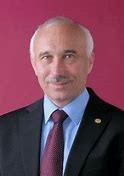
Professor Sergey Lebedev

Professor Sergey LebedevSergey Lebedev is a Professor of Plasma Physics and a Head of Plasma Physics Group at Imperial College London. His research at the MAGPIE pulsed power facility concentrates on the physics of high energy density plasmas, including laboratory astrophysics experiments, physics of wire array z-pinches and plasma diagnostics. He is a Fellow of the American Physical Society (2004) and of the Institute of Physics (2005). |
| 11:45 - 12:15 |
Pulsed power at Sandia National Laboratories and the Z fundamental science program

Dr Dan Sinars

Dr Dan SinarsDr. Daniel Sinars is the Director for the Pulsed Power Sciences Center, which is best known for conducting research on the world’s most powerful pulsed power machine, the 26 MA, 80-TW, 22 MJ “Z” facility. The Z facility is used for a wide range of high energy density physics science, the study of matter and radiation at extreme pressures (>1 million times atmospheric pressure). Daniel is also the Sandia Executive for the Inertial Confinement Fusion and Science programs of the National Nuclear Security Administration. The Center manages a combined annual budget of >$150M and has about 300 employees. The Center also operates several additional facilities, including the multi-kJ, 2-TW Z-Beamlet laser facility adjacent to Z, the STAR gas gun facilities, and a variety of smaller pulsed power machines. Daniel joined Sandia in 2001 after receiving a PhD in Applied Physics from Cornell University, and a B.S. in Engineering Physics from the University of Oklahoma in 1996. He has made extensive contributions to inertial confinement fusion, high energy density science, and z-pinch physics research, with over 130 refereed journal publications in these fields (26 as first author) and an h-index of 46 (Elsevier Scopus). Daniel’s contributions were recognized in 2007 with an IEEE Nuclear and Plasma Sciences Society Early Achievement Award, and in 2011 with both a Department of Energy Early Career Research Program Award and the Presidential Early Career Award for Scientists and Engineers (PECASE). He was elected as a Fellow of the American Physical Society in September 2015. Daniel was honored with the Ernest Orlando Lawrence Award in 2022, which recognizes mid-career U.S. scientists and engineers who have advanced new research and scientific discovery supporting the Department of Energy and is one of the longest-running and most prestigious science and technology awards bestowed by the U.S. Government. |
Chair

Professor Jeremy Chittenden

Professor Jeremy Chittenden
Jeremy Chittenden is a Professor of Plasma Physics at Imperial College with over 30 years’ experience of innovative research in fields of high energy density physics, laboratory astrophysics and inertial confinement fusion (ICF). He is responsible for developing a broad range of radiation hydrodynamics, MHD and kinetic plasma modelling tools which are used extensively in the design of experiments through collaborations with groups in the UK, US & France.
In addition to his theoretical and modelling work, Prof. Chittenden also has extensive experience of experiments on large scale pulsed facilities. Since 2013 Prof. Chittenden has been co-director of the Centre for Inertial Fusion Studies. He is one of small number of scientists to work in all three of the main approaches to inertial confinement fusion using either indirect, direct or magnetically drive. Professor Chittenden is a fellow of the American Physical Society, a William Penney Fellow and a divisional associate editor of Physical Review Letters and has published over 170 peer reviewed articles.
| 13:15 - 13:35 |
New science using a burning plasma
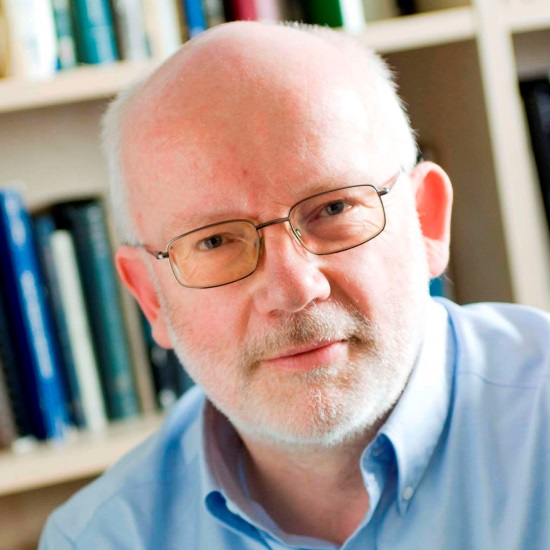
Professor Steven Rose, Imperial College London, UK

Professor Steven Rose, Imperial College London, UKProfessor Rose joined Imperial College in 2006 and since then has undertaken several roles at Imperial including the Head of Plasma Physics and the Vice-Dean of Natural Sciences. He has worked in plasma physics for all of his career, with a particular emphasis on plasmas produced using high-power lasers. He spent much of that time at the two high-power laser facilities in the UK: the Rutherford Appleton Laboratory’s Central Laser Facility where he became the Associate Director for Physics and at AWE Aldermaston where he was the Head of Plasma Physics. |
|---|---|
| 13:35 - 13:55 |
Pulsed power machines as a tool for development of spectroscopic diagnostics for HED plasmas

Professor Yitzhak Maron

Professor Yitzhak MaronYitzhak Maron received his Ph.D. in Physics from the Weizmann Institute of Science, served as a postdoctoral fellow at the Weizmann, and as a research Associate at the Laboratory of Plasma Studies at Cornell University. As a Professor in the Faculty of Physics of the WIS, he has been heading the Plasma Laboratory there. His Laboratory focuses on spectroscopic investigations of high-energy-density plasmas, together with developing kinetics, line-shape, and radiation-transport computations. His laboratory conducts broad international collaborations, and hosts worldwide students and researchers. He is an APS Fellow (1995), an IEEE Fellow (2003), the recipient of the IEEE PSAC Award (2007), and the sole recipient of the American Physical Society John Dawson Award for Excellence in Plasma Physics Research for 2009. |
| 13:55 - 14:15 |
An overview of Laser Inertial Fusion Science and areas where HED pulsed power can contribute

Dr Robbie Scott

Dr Robbie ScottDr Robbie Scott is a Senior Plasma Physicist, in the Central Laser Facility, STFC Rutherford Appleton Laboratory (RAL). Initially studying Mechanical Engineering at the University of Edinburgh he graduated in 2001. After working as a design engineer in the oil industry for 2 years, he joined RAL to lead a team in the project management, design, manufacturing, and commissioning of the target assembly for the £300M ISIS Target Station 2 neutron spallation source. Inspired by advances in Inertial Fusion Energy, he started his plasma physics PhD at Imperial College London in 2007, studying experimental and numerical aspects of fast ignition laser inertial fusion. From 2011-2012 he spent a year as a visiting scientist at Lawrence Livermore National Laboratory (LLNL) working on the National Ignition Campaign at the National Ignition Facility (NIF). Here he made key discoveries regarding the pivotal role of low-mode implosion asphericity in implosion energetics. Returning to the Central Laser Facility in 2012, Scott now works principally Laser Direct Drive inertial fusion, much of which is performed collaboratively with UK universities and US labs. His work combines numerical modelling, experiments on the Omega laser facility at the Laboratory for Laser Energetics and NIF, and code development. Recently he has pioneered a new ‘Shock Augmented Ignition’ approach to Laser Inertial Fusion, which forms the basis of close collaborative experiments on NIF with the aim of demonstrating fusion energy gain. He sits on numerous international panels including as Chair of the UK Inertial Fusion Consortium, NIF User Executive Committee, European Physical Society Beam Plasma and Inertial Fusion Board, UK Fusion Advisory Board, The Fusion Cluster, Laboratory for Laser Energetics: Laboratory Basic Science Facilities Access Panel Member, HiPER+: Advisory Board Member LaserLab Europe: ICF/IFE Expert Group Panel Member, DOE Office of Science Inertial Fusion Energy Basic Research Needs Workshop: Panel Lead. |
| 14:15 - 14:35 |
The York Fusion Doctoral Training Centre interactions with external facilities

Dr Kate Lancaster, University of York, UK

Dr Kate Lancaster, University of York, UKDr Kate Lancaster is a lecturer and programme leader for the Msc in Fusion Energy, based at the York Plasma Institute, part of the physics department at the University of York. She received her PhD in 2005 in Advanced Fast Ignition Studies from Imperial College whilst based in Central Laser Facility at the Rutherford Appleton Laboratory. A post-doctoral position was followed by a permanent research position at the Central Laser Facility, before coming to the York Plasma Institute in 2012. Her research expertise is in ultra-intense laser-plasma interactions and is based around understanding the absorption of those lasers and the subsequent transport of the energy. She specifically is interested in the role the electrons play in this and how we can manipulate and control them to heat matter, which is relevant for alternative laser driven fusion schemes and creating warm/hot dense matter. She is also interested in the study and understanding of such matter once it has been produced. Kate has been very active in the communication of science for many years. She has spoken to tens of thousands of people at many events, festivals, and schools and has appeared as an expert on both television and radio, mainly speaking about lasers, plasmas, and fusion. She gave a prestigious Friday Evening Discourse at The Royal Institution in 2015 on “The Extreme World of Ultra Intense Lasers”, which has subsequently received over 260,000 views on YouTube. Recently Kate was a guest on the BBC Radio 4 show In our time talking about plasma. This show has a listenership of ~2.5 million with a further ~2 million podcast downloads. |
| 14:35 - 14:55 |
How pulsed power has advanced our understanding of fundamental radiation and atomic physics
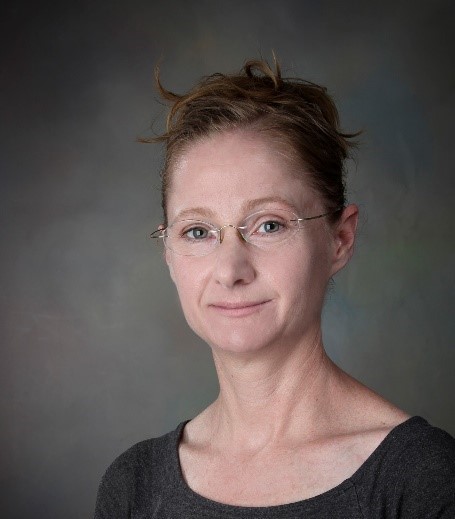
Associate Professor Stephanie Hansen

Associate Professor Stephanie HansenStephanie Hansen is a computational physicist who studies the atomic-scale behavior of atoms in extreme environments relevant to stellar astrophysics and inertial confinement fusion. She has authored or co-authored more than 150 publications and is the principal author of a spectroscopy code that is used around the world to interpret x-ray emission from laboratory and astrophysical plasmas. She holds degrees in Physics and Philosophy from the University of Nevada, Reno, began her physics career at Lawrence Livermore National Laboratory, and is presently a Senior Scientist at Sandia National Laboratories and a Visiting Associate Professor at Cornell University. She received the Presidential Early Career Award for Scientists and Engineers in 2017, was elected a Fellow of the American Physical Society’s Division of Plasma Physics in 2019, chaired the APS-DPP Women in Plasma Physics Committee from 2018-2020, and has served on scientific advisory councils and committees for the Department of Energy, the National Science Foundation, and the National Academies of Sciences, Engineering, and Medicine. |
| 15:15 - 15:35 |
Defense relevant HED science
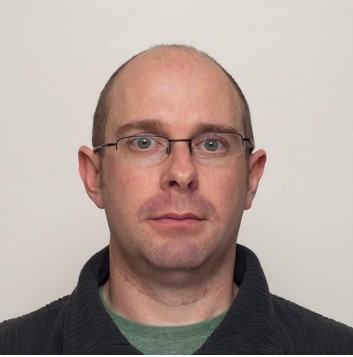
Robert Lock

Robert LockRob joined AWE, in the Design Mathematics Department, in 1995 after studying Physics at Imperial College London. Having arrived shortly after the UK ended nuclear testing in 1992, the focus of his research has been in the fields of Comprehensive Testing Ban Treaty (CTBT) compliant science-based stockpile stewardship. In particular, the development and application of multi-physics computational fluid dynamics (CFD) algorithms and software to study extreme plasma conditions and high-pressure hydrodynamic phenomena. At AWE Rob studied, part-time, for a PhD in Applied Mathematics, again at Imperial College (2007). Since 2011 Rob has held various senior positions within the Physics area at AWE and in 2020 he was appointed to the role of Head of Physics at AWE. |
|---|---|
| 15:35 - 15:55 |
First principles exploration of dense materials

Professor Chris Pickard

Professor Chris PickardProfessor Pickard’s research helps the modern scientist “see” and discover the universe at the atomic scale through Quantum Mechanics – from the centres of giant exoplanets, to pharmaceutical compounds, new battery materials and high temperature superconductors. He is the inaugural Sir Alan Cottrell Professor of Materials Science in the Department of Materials Science and Metallurgy, University of Cambridge. Previously he was Professor of Physics, University College London, and Reader in Physics, University of St Andrews. He has held EPSRC Advanced and Leadership Research Fellowships, and a Royal Society Wolfson Research Merit Award. He is a lead developer of the widely used CASTEP computer code, and introduced both the GIPAW approach to the prediction of magnetic resonance parameters and Ab Initio Random Structure Searching (AIRSS). CASTEP has provided a significant source of licensing income for Cambridge Enterprise for over 20 years, while his AIRSS software is freely available through an open source license. In 2015 he won the Rayleigh Medal and Prize of the Institute of Physics, awarded for distinguished research in theoretical, mathematical or computational physics. |
Chair
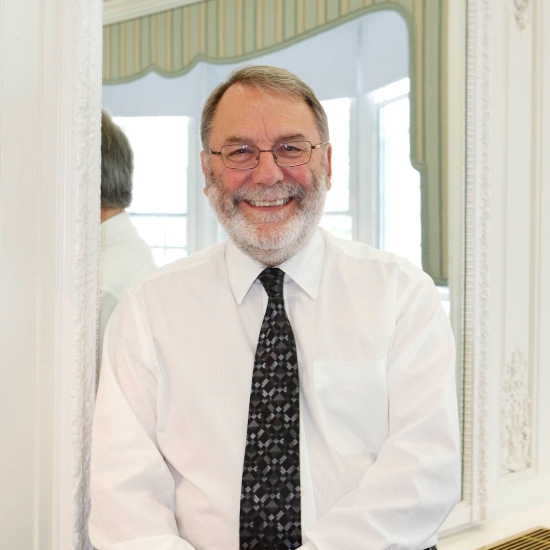
Sir Peter Knight FRS, Imperial College London, UK

Sir Peter Knight FRS, Imperial College London, UK
Peter Knight is Senior Research Investigator at Imperial College. He retired in 2010 as Deputy Rector (Research) at Imperial. He was knighted in 2005 for his work in optical physics. Knight was the 2004 President of the Optical Society of America and 2011-2013 President of the Institute of Physics. He is Editor of Contemporary Physics, Chair of the UK National Quantum Technology Programme Strategy Advisory Board, chairs the Quantum Metrology Institute at the National Physical Laboratory, was until 2010 chair of the UK Defence Scientific Advisory Council and remains a UK Government science advisor. His research centres on quantum optics and quantum technology. He has won the Thomas Young Medal and the Glazebrook Medal of the Institute of Physics, the Ives Medal and the Walther Medal and Prize of the OSA, the Royal Medal of the Royal Society and the Faraday Prize of the IET.
Chair

Dr Nick Hawker

Dr Nick Hawker
Nick’s research into fusion began in 2007 as part of his master's thesis, where he worked at the University of Oxford with Yiannis Ventikos. This work continued into a DPhil, where he performed hydrodynamic simulations of shock-driven cavity collapse. These simulations showed that cavity collapse leads to inertial confinement of the gas inside the cavity and revealed that extreme states of matter could be reached, possibly entering the regime for fusion. To explore the concept of energy generation via this process, Nick and Yiannis co-founded First Light Fusion Ltd in 2011.
Nick also spent three years tutoring at Lady Margaret Hall during his studies. After finishing his DPhil in 2012, Nick joined First Light Fusion as CEO and CTO, and continues to oversee the technical vision of the company.
